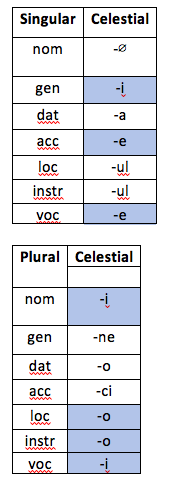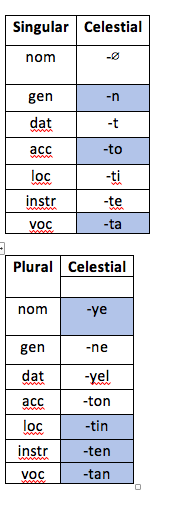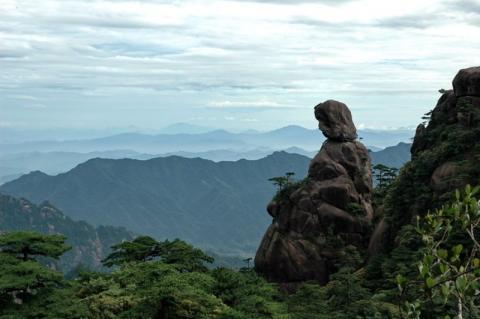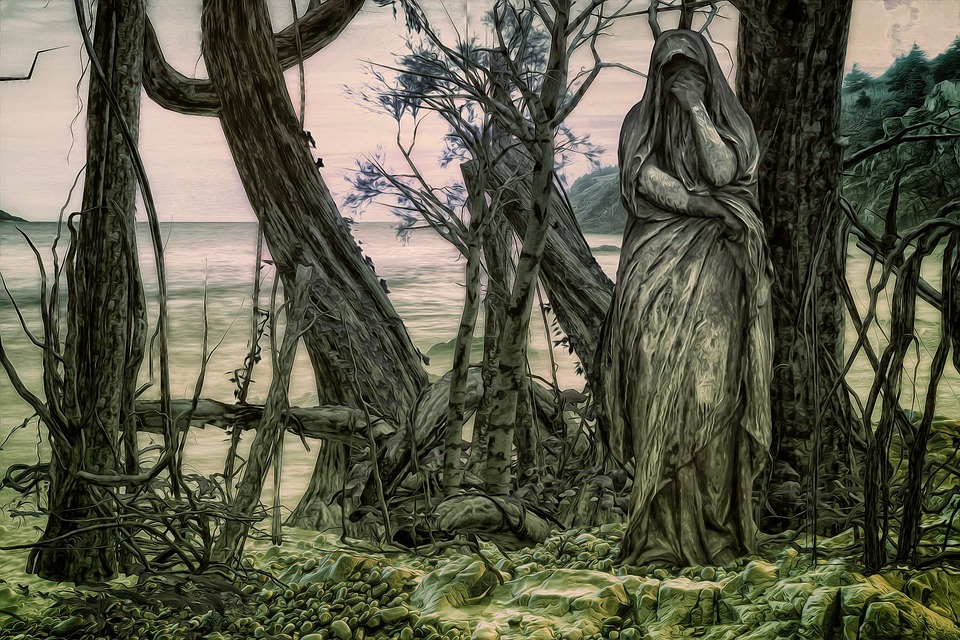December is the month that conlangers of all kinds participate in something called Lexember. We create a new word (in the lexicon) for our conlang(s) every day of the month. I’ve been participating and sharing words largely through tumblr (user: aeniith) and twitter (@MintakaGlow). Here are a few from the first days so far.
Rílin
Dec 1:
íha [ˈiha], [v tr/intr] : [1] forgive, pardon; accept, understand; [2] know, acknowledge, recognize; [3] bring attention to, point out, remark on; [4] notice, realize
Etymology: Possibly from iŵ- [iɸ] ‘take in, accept’ and ja ‘know’
Example:
íhazim kasa tañ lönenet naba ŵedínla
íha -z -im kasa tañ lön -en-et naba ŵedí -n-la
forgive-pst.prf-1s already dist woman-pl-abs whatever wrongdoing-pl-instr
“I have already forgiven those women for any wrongdoing’
Karkin
Dec 2:
vkāmēgh [vkɑːˈmeːɣ] [v tr/intr] (ki-verb class) : [1] break out of, escape from within; [2] break down a wall or other barrier; [3] (fig) destroy a boundary, flout a rule, defy expectations
Etymology: From vkā ‘strike, hit’ and mēgh ‘run, run away’.
Example:
Psi nux-ë twë qhrō ki vkāmēgh-ā -yi vuq kuqhkë mi ja wëngi-ā -pa
dist girl-3s.p who early part defy -pst-3s.a all clan gen part speak-pst-1s.a
“I spoke with that girl who had previously broken all the boundaries of her family clan.”
Rílin
Dec 3:
bióŝû [bɪˈoʃʌ] [v intr] : [1] walk precariously, walk on a slippery or icy surface; [2] be in a precarious or unsure state; [3] be in a risky state, ‘walk on thin ice’.
Etymology: From bió ‘slip, slide’ and [jó]ŝû ‘walk’.
Example:
Ŝy-ky sé zaín séfet tû pre-t pato bióŝû -l -í
be-irr prox time now do care-abs because walk.slippery-prs.hab-2s.fam
‘Now is the time to take care because you are in a precious position’
Rílin
Dec 4:
móníhas [moˈnihas] [n, inan] : [1] portent, omen, sign; [2] hint, clue; [3] tell, revealing action.
Etymology: From móní ‘watch, guard’ and has ‘sign, signal’.
Example: Né í-t -íí kuala -n-et ómina-mí, x-óly -t -aap lí-et
if look-npst-2s.fut constellation-pl-abs sky-gen caus-solve-npst-3s.fut 2s-abs the
bí ǵom-et ka-ŝó kalum-mí a oma-mí.
knot-abs two-adv world-gen and soul-gen
“If you look into the constellations in the sky, it will let you untie the knot of both the world and the soul.”
Tosi
tūgh [tuːɣ] [n] : [1] face; [2] front; [3] cover, outside covering, skin; [4] sleeve, sock, outer layer (e.g. of a wrapping, of clothing); [5] protective layer, protection, assurance, aide, help, assistance, back-up, auxiliary force.
Etymology: From Old Tosi tūhuz- “face; scalp”
Example:
Tapi sur ja da chi tūgh i vis rīy.
imp angle vrblz 2s.fem gen face obj to sky
“Turn your face toward the sky”
Tosi
Dec 6:
gungar [ˈɡuŋɡar] [v, tr] : [1] chase, pursue; [2] hunt (e.g. animals); [3] fish, catch fish; [4] seek out, look for, search for.
Etymology: From gar ‘follow’, and gun-, an emphatic prefix (cf. gun ‘great, might’).
Example:
Na gangur na chi xeti gek i, gempe tapi ixari!
1s.f pursue 1s.f gen female.servant drunk obj please imp help
“I’m chasing after my drunken servant, please help me!”
Tosi
Dec 7:
hās [hɑːs] [v, tr] : [1] fill; [2] replenish; [3] add to, increase.
Etymology: From old Tosi hāh-, hāθ- ‘full, plentiful’
Example:
Tapi hās na chi kūn i ge na gō tiv gunāl.
imp fill 3s.f gen cup obj if 3sg.f be punct.fut empty
“Fill her cup if it is empty”










